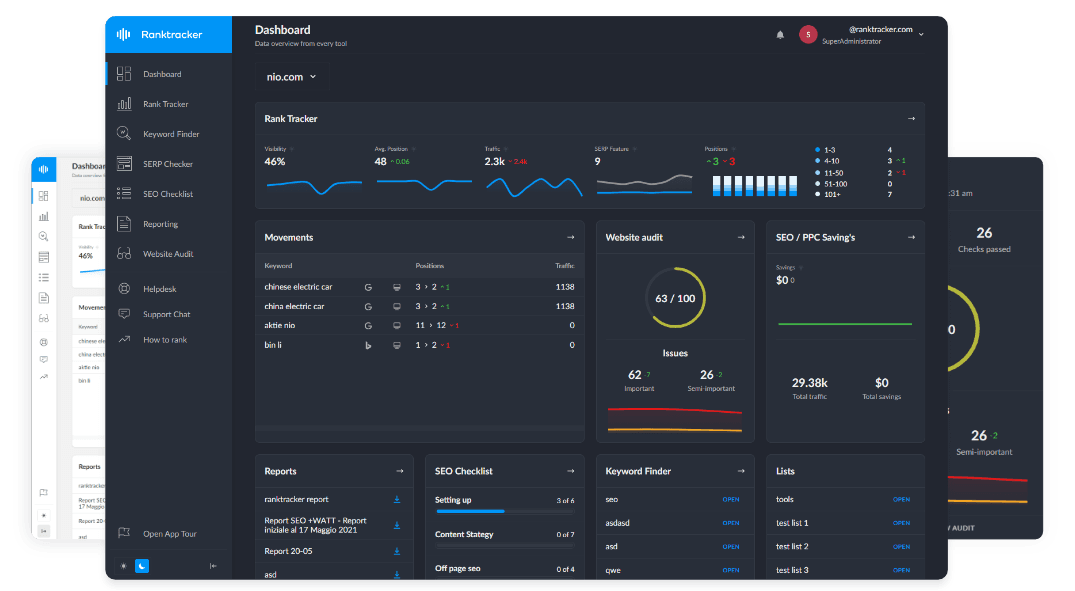Intro
In the increasingly competitive world of ecommerce, it’s critical to stand out. With millions of online stores vying for customers’ attention, paid advertising alone is no longer enough to ensure long-term growth. This is where ecommerce search engine optimization (SEO) becomes even more important.
An effective SEO strategy not only increases brand awareness, but also reduces advertising costs and increases conversion rates by attracting more organic traffic. This guide will take you deep into the core elements of e-commerce SEO, covering everything from keyword research to SEO techniques and real-life case studies.
What is Ecommerce SEO?
Ecommerce SEO is the process of optimizing an online store to improve its ranking in the search engine results page (SERP). By adjusting various factors on and off the page, businesses can increase brand awareness, attract targeted traffic, and ultimately drive sales growth.
Why Does Your Ecommerce Website Need SEO?
Increased visibility: Higher rankings mean more organic traffic from potential buyers.
- Reduced advertising costs: SEO helps reduce reliance on paid advertising and reduces advertising expenses.
- Higher conversion rates: Organic traffic generally has a higher conversion rate than paid traffic.
- Sustainable growth: Unlike PPC, SEO does not require frequent advertising investment to achieve long-term stable results.
Key Ecommerce SEO Strategies
1. Keyword Research: Find the Right Commercial Keywords
Keyword research is the foundation of any successful ecommerce SEO strategy. Its core goal is to identify the keywords that potential customers are searching for and optimize website content based on these keywords.
How to Find Valuable Keywords:
- Use tools such as Google Keyword Planner, Ahrefs, SEMrush, and Ubersuggest to identify high-value keywords.
- Prioritize keywords with commercial intent, for example, "buy wedding dresses online" has more conversion potential than "wedding dress ideas".
- Use long-tail keywords to obtain less competitive, precise market segment traffic.
- Analyze competitor keywords to find gaps and opportunities to develop a more competitive strategy.
2. On-Page SEO: Optimize Your Ecommerce Website
Optimize Product Pages:
- Title Tags and Meta Descriptions: Naturally incorporate your primary keywords and be engaging.
- URLs: Keep them short, descriptive, and include keywords (e.g., yourstore.com/bridesmaid-dresses).
- H1 and H2 Tags: Use structured titles that include keywords.
- Alt Text for Images: Helps search engines understand what the image is about.
Content Optimization:
- Create SEO-friendly blog content (like “How to Choose the Perfect Wedding Dress”).
- Write detailed product guides that provide value and help improve rankings.
- Add a FAQ (Frequently Asked Questions) section to address common customer concerns.
Internal Linking Strategy:
Strengthen your site structure and improve SEO rankings by linking to related product pages and blog posts.
Use breadcrumb navigation to improve user experience and help search engines better index your site.
3. Technical search engine optimization: improving performance and usability
Technical Search Engine Optimization ensures that search engines are able to crawl and index your site efficiently.
Speed optimization:
- Use Content Delivery Networks (CDNs) to reduce load times.
- Compress images and enable browser caching to improve page load speed.
Mobile Optimization:
- Ensure your website has a responsive design for smooth browsing on a variety of devices.
- Consider using AMP (Accelerated Mobile Pages) technology to improve mobile loading speeds.
Structured Data & Indexing:
- Implement Schema markup to enhance the rich snippet presentation of the page.
- Submit an up-to-date XML sitemap to Google Search Console to ensure site content is up-to-date.
- Use Robots.txt files to guide search engine crawlers and ensure proper crawling of site content.
4. Off-Page SEO: Building Authority & Backlinks
Link Building Strategies:
- Earn high-quality backlinks from reputable fashion blogs, wedding sites, and news portals.
- Use guest blogging and influencer collaborations to gain exposure.
- Engage in broken link building to reclaim lost link opportunities.
Social Media & SEO:
- Optimize social profiles on Pinterest, Instagram, and TikTok.
- Encourage user engagement and shares to boost visibility.
User-Generated Content (UGC):
- Encourage customer reviews and testimonials to improve trust and rankings.
- Feature user-generated images and experiences in product descriptions.
5. Advanced ecommerce SEO Strategies
Optimize category and product pages:
- Add unique, keyword-rich descriptions to category pages to improve page relevance.
- Strengthen internal links between category and product pages to improve the accessibility of the site structure.
Combining SEO with PPC to maximize ROI:
- Use SEO insights to optimize Google Ads delivery strategies.
- Carry out precise retargeting campaigns based on SEO-driven audience data.
Data-driven SEO:
- Use Google Analytics and Search Console to track site performance and monitor optimization results in real time.
- Identify and optimize high-converting keywords to further improve SEO results.
Case Study: How Azazie Built a High-Traffic Ecommerce Brand
Azazie, a leading wedding and formal wear brand, leveraged SEO to dominate its niche. Here’s how they achieved success:
- Comprehensive Keyword Research:
- Targeted a mix of short-tail and long-tail keywords (e.g., “bridesmaid dresses” and “affordable bridesmaid dresses for summer”).
- Optimized product pages and blog content around these keywords.
- Content Marketing & Blogging:
- Created fashion guides and blog posts on trending wedding styles.
- Published detailed “how-to” articles and styling tips to attract organic traffic.
- Strategic Link Building:
- Partnered with fashion bloggers and influencers for backlinks.
- Featured in high-authority fashion and wedding websites.
- Social Media Integration:
- Leveraged Pinterest, Instagram, and TikTok to drive brand awareness.
- Encouraged customer photo sharing, enhancing authenticity and engagement.
- Local & Seasonal SEO:
- Optimized pages for seasonal trends like “Graduation Dresses” and localized keywords for regional search demand.
- Organize some flash mobs locally.
Conclusion: Successful Ecommerce SEO Strategies
SEO is an ongoing process that allows your ecommerce store to grow steadily by continually improving your website, conducting keyword research, creating high-quality content, and building a strong backlink strategy.
The All-in-One Platform for Effective SEO
Behind every successful business is a strong SEO campaign. But with countless optimization tools and techniques out there to choose from, it can be hard to know where to start. Well, fear no more, cause I've got just the thing to help. Presenting the Ranktracker all-in-one platform for effective SEO
We have finally opened registration to Ranktracker absolutely free!
Create a free accountOr Sign in using your credentials
To be successful, businesses must keep up with algorithm updates, continuously monitor SEO results, and continuously optimize strategies based on data insights. Combining on-page optimization, technical improvements, and strategic link building can bring long-term success to your store.

